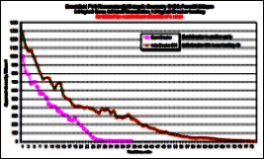Coated or Encapsulated Gelbreaker Ammonium Persulfate, Potassium Persulfate and Sodium Bromate Manufacturers, with SDS, MSDS Sheet |
Supplier, Manufacturer, Exporter of Coated or Encapsulated Gelbreaker Ammonium Persulfate, Potassium Persulfate and Sodium Bromate, Muby Chemicals of Mubychem Group, established in 1976, is the original manufacturers of Specialty Chemicals, Pharmaceutical Excipient, Fragrance Food & Flavor chemicals, Reagent Grade Chemicals, Shale Gas Fracturing Chemicals in India. Mubychem Group has several manufacturing facilities spread across Western India and world wide contacts and toll manufacturers. We are exporting globally to countries like USA, Canada, Europe, UAE, South Africa, Tanzania, Kenya, Egypt, Nigeria, Cameroon, Uganda, Turkey, Mexico, Brazil, Chile, Argentina, Dubai, Korea, Vietnam, Thailand, Malaysia, Indonesia, Australia, China, Germany, France, Italy Portugal, Bangladesh, etc. The products are offered as per required specifications and in correct shape and size in mm or meshs or microns as specified by the buyer. The participating units have one or more accreditations like FDA - cGMP and GLP approval, ISO-9001 Certified, "REACH" Registered, ISO-14001, ISO/IEC 17025, ISO-22000, FSSC 22000, ISO 45001, Kosher Certified, Halal Certified, HACCP, FSSAI. We offer Commercial Pure & IP BP EP Ph Eur USP NF JP FCC Food Grade Analytical Reagent Grades of Chemicals |
| Bookmark this Web Site -- or -- Email This Page Info to a Colleague or Yourself |
Search our website here:







How big is your requirement or how small
We serve it all.
Specifications, Safety Data Sheet, Manufacturing process details, Wholesale retail buy sell prices, Uses etc available on line in these pages for Encapsulated Gelbreaker Ammonium Persulfate, Potassium Persulfate and Sodium Bromate.
Encapsulated Ammonium Persulfate
For MSDS Sheet Click
MSDS Sheet of Encapsulated Gel Breaker Ammonium Persulfate Manufacturers
Spanish Fabricantes de persulfato de amonio, persulfato de potasio y bromato de sodio encapsulados
Encapsulated Gel Breaker Ammonium Persulfate
Also Encapsulated Sodium Bromate Controlled Release Guar Gel Breaker Suppliers

In the USA, UAE, Iran Iraq, Kuwait, Saudi Arabia and other oil producing areas, several hundred chemical compounds are used in hydraulic fracturing also called fracking, fracing or frac. In some areas like UK only 'Non-Hazardous' chemicals are permitted for fracturing fluids by the Environment Agency. All chemicals have to be declared publicly and increasingly, food additive based chemicals are available to allow fracking to take place safely.
Mubychem is an internationally preferred source for Stimulation Chemicals and Hydraulic Fracturing Chemicals. We serve various oil and shale gas producing countries like USA UAE, Kuwait, Iran, Iraq, Saudi Arabia, UK, Europe India etc. We are never too far from your well-site with multiple 24/7 company owned or rented warehouses in the India, USA and across the globe. With customers in several countries, we sell almost all the fracturing chemicals.
Applications:
Oil field – Oxidizing Gelbreaker for Guar slurries used in fracturing. In fracking or frac jobs, after proppant is placed, fluid viscosity needs to be reduced. All Guar based systems can be broken using oxidizing breakers. GB-2 generates free radicals of oxygen to efficiently oxidize and break all types of guar gels.
Manufacturing – Polymerization initiator.
Water Treatment.
Coated or Encapsulate Ammonium Persulfate, based coated chemical to be active at 140F or 60C delayed release gel breaker is used for breaking gel up to temperatures of 200F or a little more.
Coated or Encapsulate Potassium Persulfate based coated chemical to be active at 195F or 90C called high temperature delayed release gel breaker is used when significantly higher down-hole temperatures up to 300F or 150C are expected.
Coated or Encapsulated Sodium Bromate based gel breaker for very high temperatures. It will not be active up to 240F or 115C and is suggested for use at 280F to 330F or 138C to 165C.
Ammonium Persulfate Encap:
It is a salt manufactured by electrolyzing Ammonia and Sulfuric Acid in a palladium cell. We offer both immediate release and encapsulated delayed release version.
Encap Ammonium Persulfate is generally demanded for 3 different temperature ranges.
LT Encapsulated Breaker for downhole temperature of 100F (38C) to 120F (49C). This will have a coating of about 10.5 to 12.5% and active matter about 87 to 89%.
MT Encapsulated Breaker for for downhole temperature of 120F (49C) to 140F (60C). This will have a coating of about 13 to 16% and active matter about 83 to 86%.
HT Encapsulated Breaker for for downhole temperature of 140F (60C) to 200F (93C). This will have a coating of about 16.5 to 23% and active matter about 76 to 78%.
We offer controlled release temperature dependent material having specifications as under:
Active matter: 90% to 60% (as per low medium & heavy coating)
Mesh size: 15-40 mesh
Specific Gravity: Approximate 1.75
Route of Action: Free radical generation starts upon dissolution is water and is accelerated at fluid temperatures of 120F or say 50C and above. It can be used up to fluid temperatures of 200F or say 95C.
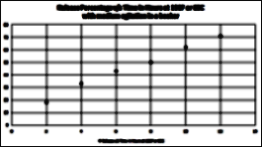
Click on the Image to Enlarge.
Under harsher testing condition, at fast agitation and sand suspended along with, 70-80% of the release is in 6 hours.
One of the user has reported the below mentioned comparison of our material
Compatibility: Compatibility with brine, calcium chloride, KCl solutions as well as all known fracturing fluids, gels, cross-linkers and additives. It is extensively used in oil well drilling, fracturing or fracking.
Environment: It is not hazardous to the environment.
Packaging:
50 lb pails, 1200 lbs per pallet.
55 lb pails, 1320 lbs per pallet.
55.1 lb bags, 2204 lbs per pallet; 2204 lb super sacks, 1 per pallet.
Special pack sizes available upon request.
Potassium persulfate is a similar material with use up to 300F or 150C bottom-hole temperature.
Sodium bromate is used up to 330F or 165C bottom-hole temperature.
We manufacture and supply as under:
We also manufacture and supply as under:
Micro-Encapsultted Copper Gluconate
Encapsulated Sodium Bicarbonate
Encapsulated Ammonium Persulfate
Micro-Encapsultted Ascorbic Acid, Vitamin C
Micro-Encapsultted Ferrous Fumarate
Micro-Encapsultted Sodium Ascorbate
Micro-Encapsultted Zinc Gluconate
Micro-Encapsultted Zinc Sulfate.
Manufacturers:
MUBY CHEMICALS
Ambernath Mumbai, Ankleshwar Gujarat, India
TEL: (OFFICE) +912223770100, +912223726950
Current Date Time in India GMT+5:30
e-mail: info@mubychem.com
USA, Canada, Mexico and other American
neighbouring buyers may
e-mail: us@mubychem.com
Call toll-free 1-877-682-9243 (1-877-MUBYCHEM)

Copyright and Usual Disclaimer is Applicable.
Last 30 November, 2025




Exporters to USA Canada UAE Europe South Africa Tanzania Kenya Uganda Egypt Nigeria Turkey Mexico Brazil Argentina Chile Dubai etc.
Global or International Suppliers, Exporters, Importers, Manufacturers
I shall pass through this world, but once. If therefore, there is any good that I can do, or if there is any favor that I can show to a fellow human being, let me do it now. Let me not defer or neglect it. For I shall not tread this way again
Encapsulated Gel Breaker Ammonium Persulfate Based SDS, Safety Data Sheet
MSDS, Material Safety Data Sheet 18-Oct-20
1. Product Identification
Product Name/Synonyms: Encapsulated Ammonium Persulfate, Coated Gel Breaker, Encapsulated Breaker LT, Encapsulated Breaker HT, Encapsulated Breaker MT.
CAS No.: Mixture.
Intended Use: Oil & Gas Exploration. Breaking of Gaur Gum Gel in Oil well drilling fracking or fracturing.
Molecular Weight: Not applicable
Chemical Formula: Not applicable
Intended Use and uses advised against (if any): Oil & Gas Wells fracturing and Industrial Manufacturing.
Supplier: As per letterhead.
2. Hazards Identification
GHS, Globally Harmonized System Classification in accordance with 29 CFR 1910
Classification according to Regulation (EC) No 1272/2008
Oxidizing Solids Category 3, H272
Acute toxicity - Oral Category 4, H302
Skin corrosion/irritation Category 2, H315
Skin sensitization Category 1, H317
Serious eye damage/eye irritation Category 2A, H319
Respiratory sensitization Category 1, H334
Specific target organ toxicity (single exposure), Respiratory tract Category 3, H335
Labeling according to GHS USA & Regulation (EC) No 1272/2008
GHS Label Elements 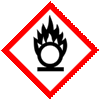 Oxidizing Solid | GHS Label Elements 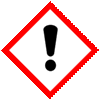 Irritant | GHS Label Elements 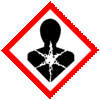 Health Hazard |
Signal Words: Warning
Hazard Statements:
H272: May intensify fire; oxidizer
H302: Harmful if swallowed
H315: Causes skin irritation
H317: May cause an allergic skin reaction
H319: Causes serious eye irritation
H334: May cause allergy or asthma symptoms or breathing difficulties if inhaled
H335: May cause respiratory irritation.
Precautionary Statements - Prevention:
P210: Keep away from heat/sparks/open flames/hot surfaces. - No smoking.
P220: Keep/Store away from clothing/other combustible materials
P221: Take any precaution to avoid mixing with combustibles.
P260: Do not breathe dust/fume/gas/mist/vapors/spray
P264: Wash ... thoroughly after handling
P270: Do not eat, drink or smoke when using this product
P271: Use only outdoors or in a well-ventilated area.
P280: Wear protective gloves/protective clothing/eye protection/face protection.
P285: In case of inadequate ventilation wear respiratory protection.
Precautionary Statements - Response:
P301+P312: IF SWALLOWED: Call a POISON CENTER or doctor if you feel unwell.
P302+P352: IF ON SKIN: Wash with plenty of water.
P304+P341: IF INHALED: If breathing is difficult, remove to fresh air and keep at rest in a position comfortable for breathing.
P305+P351+P338: IF IN EYES: Rinse cautiously with water for several minutes. Remove contact lenses, if present and easy to do. Continue rinsing.
P314: Get Medical advice/attention if you feel unwell.
P330: If swallowed, rinse mouth.
P332+P313: If skin irritation occurs: Get medical advice/attention
P337+P313: If eye irritation persists: Get medical advice/ attention.
P360: Rinse immediately contaminated clothing and skin with plenty of water before removing clothes.
P362: Take off contaminated clothing and wash before reuse.
Precautionary Statements - Storage
P402: Store in a dry place
P403 + P233 - Store in a well-ventilated place. Keep container tightly closed
P501: Dispose of contents/container to authorized agents only.
Classification according to EU Directives 67/548/EEC or 1999/45/EC:
Hazard Symbols:
O Oxidizing
Xn Harmful
Xi Irritant
Risk Phrase:
R8 Contact with combustible material may cause fire.
R22 Harmful if swallowed.
R36/37/38 Irritating to eyes, respiratory system, and skin.
R42 May cause sensitization by inhalation.
R43 May cause sensitization by skin contact.
3. Composition/Information on Ingredients
1. Ammonium Persulfate
CAS Number: 7727-54-0
EC Number: 231-786-5
Less than 90%
2. Other Non-Haz Ingredients
Less than 25%
Confidential Business Information.
4. First Aid Measures
Always seek medical attention after first aid measures are provided.
Inhalation: Remove to fresh air. If not breathing, give artificial respiration. If breathing is difficult, give oxygen. Get medical attention.
Ingestion: If swallowed, do not induce vomiting. Give large quantities of water. Never give anything by mouth to an unconscious person. Get medical attention immediately.
Skin Contact: In case of contact, immediately flush skin with plenty of water for at least 15 minutes while removing contaminated clothing and shoes. Cover the irritated skin with an emollient. Cold water may be used. Wash clothing & shoes before reuse. Get medical attention.
Eye Contact: Check for and remove any contact lenses. In case of contact, immediately flush eyes with plenty of water for at least 15 minutes. Cold water may be used. Get medical attention.
Advice to Physicians: Please treat symptomatically and supportively.
5. Fire Fighting Measures
Fire: Ammonium Persulfate and Encapsulated Gel Breaker is not combustible, but substance is a strong oxidizer and its heat of reaction with reducing agents or combustibles may cause ignition. Heating or contact with water releases oxygen which may intensify combustion in an existing fire.
Explosion: An explosion hazard when mixed with finely powdered organic matter, metal powder, or reducing agents.
Fire Extinguishing Media: Use any means suitable for extinguishing surrounding fire. Do not use water.
Special Information: In the event of a fire, wear full protective clothing and NIOSH-approved self-contained breathing apparatus with full face piece operated in the pressure demand or other positive pressure mode. At high temperatures under fire conditions, it may produce toxic or irritating fumes.
6. Accidental Release Measures
Personal precautions, protective equipment, environmental precautions and emergency procedures: Avoid breathing dust/fumes/gas/mist/vapors/spray. Use individual protective equipment (waterproof boots, suitable protective clothing, safety glasses, etc). Restrict unprotected personnel from the area. Prevent any contact with hot surfaces. Do not approach facing the wind. Do not touch the spilled material. Keep away from drains, surface and groundwater and soil.
Methods and materials used for containment Cleanup procedures and Storage: Contain spilled material. Cover with an inert, non-combustible, inorganic absorbent material, sweep up, and remove to an approved disposal container.
Small Spill: Use appropriate tools to put the spilled solid in a convenient waste disposal container.
Large Spill: It is an oxidizing material. Stop leak if without risk. Avoid contact with a combustible material (wood, paper, oil, clothing...). Keep the substance damp using water spray. Do not touch spilled material. Prevent entry into sewers. Eliminate all ignition sources. Avoid penetration into waterways, sewers, soil or groundwater. Local authorities should be advised if significant spillages cannot be contained.
7. Handling and Storage
Precautions for safe handling: Apply according to good manufacturing and industrial hygiene practices with proper ventilation. Wash thoroughly after handling. Do not drink, eat or smoke while handling. Avoid breathing dust/fumes/gas/mist/vapors/spray. Avoid contact with eyes, skin, and clothing. Keep container tightly closed. Avoid ingestion and inhalation. Use individual protective equipment (waterproof boots, suitable protective clothing, safety glasses, etc). Prevent any contact with hot surfaces. Containers of this material may be hazardous when empty since they retain product residues.
Conditions for safe storage, including any incompatibilities: Store in cool, dry and ventilated area away from heat sources and protected from sunlight in tightly closed original container. Keep air contact to a minimum. Store protected from heat, sparks and ignition sources and incompatible materials. Do not store with incompatible materials like combustibles, organic or other readily oxidizable materials. Avoid storage on wood floors. Containers of this material may be hazardous when empty since they retain product residues (dust, solids); observe all warnings and precautions listed for the product. Handle product only in closed system or provide appropriate exhaust ventilation at machinery. Avoid contact with skin and eyes. Remove and wash contaminated clothing before re-use.
8. Exposure Controls/Personal Protection
Airborne Exposure Limits: - ACGIH Threshold Limit Value (TLV): 0.1 mg/m3 (TWA) as persulfate
Ventilation System: A system of local and/or general exhaust is recommended to keep employee exposures below the Airborne Exposure Limits. Local exhaust ventilation is generally preferred because it can control the emissions of the contaminant at its source, preventing dispersion of it into the general work area.
Personal Respirators (NIOSH Approved): For conditions of use where exposure to dust or mist is apparent and engineering controls are not feasible, a particulate respirator (NIOSH type N95 or better filters) may be worn. If oil particles (e.g. lubricants, cutting fluids, glycerin, etc.) are present, use a NIOSH type R or P filter. For emergencies or instances where the exposure levels are not known, use a full-face positive-pressure, air-supplied respirator. WARNING: Air-purifying respirators do not protect workers in oxygen-deficient atmospheres.
Skin Protection: Wear protective gloves and clean body-covering clothing.
Eye Protection: Use chemical safety goggles. Maintain eye wash fountain and quick-drench facilities in work area.
Other Control Measures: Maintain good housekeeping in work area. Dust deposits on floors and other surfaces may pick up moisture and cause the surfaces to become slippery and present safety hazards. Handle in accordance with good industrial hygiene and safety practice. Wash hands after handling.
9. Physical and Chemical Properties
Appearance: Encapsulate Gel Breaker is white to off-white crystals
Odor: Mild organic odor
Odor threshold: Not available.
pH: Not available.
Relative density: 1.75
Melting Point: Decomposes
Initial boiling point and boiling range: Not available.
Flash point: Not available.
Auto-ignition temperature: Not available.
Decomposition temperature: Not available.
Upper/lower flammability or explosive limits: Not available.
Vapor pressure: Not available.
Vapor density: Not available.
Evaporation rate: Not available.
Flammability (solid, gas): Not available.
Partition coefficient: n-octanol/water: Not available.
Solubility: Soluble in water.
Viscosity: Not available.
10. Stability and Reactivity
Stability: It is stable under ordinary conditions of use and storage. Stability decreases in the presence of moisture
Hazardous Decomposition Products: Decomposed by moisture to form oxygen and ozone. Burning may produce nitrogen oxides, sulfur oxides, sulfuric acid, chlorine or hydrochloric acid and fumes.
Hazardous Polymerization: Will not occur
Incompatibilities: Reducing agents, organic material, sodium peroxide, water and powdered metals especially aluminum
Conditions to Avoid: Moisture, combustible materials and incompatibles.
11. Toxicological Information
Ammonium Persulfate
Oral rat LD50: 689 mg/kg
Carcinogenic Effects: Not known to be a carcinogen.
Mutagenic Effects: Not available.
Teratogenic Effects: Not available.
Developmental Toxicity: Not available.
Reproductive Effects: No information available.
12. Ecological Information
Environmental Toxicity: No information found.
Persistence and Degradability: No information available.
Mobility: No information available.
Bioaccumulation/ Accumulation: No information available.
Results of PBT and vPvB assessment: No data available for assessment.
13. Disposal Considerations
Whatever cannot be saved for recovery or recycling should be handled as hazardous waste and sent to a RCRA approved waste facility. Processing use or contamination of this product may change the waste management options. State and local disposal regulations may differ from federal disposal regulations. Dispose of container and unused contents in accordance with federal, state and local requirements.
14. Transport Information
Domestic Land, DOT USA & ADR/RID Europe
UN/NA: UN1444
Proper Shipping Name: Contains Ammonium Persulfate
Hazard Class: 5.1; Packing Group: III
International (Water, I.M.O.)
UN/NA: UN1444
Proper Shipping Name: Contains Ammonium Persulfate
Hazard Class: 5.1; Packing Group: III
15. Regulatory Information
USA:
California No Significant Risk Level: None of the chemicals in this product are listed.
Section 16 - Additional Information
European Labeling in Accordance with EC Directives:
H272: May intensify fire; oxidizer
H302: Harmful if swallowed
H315: Causes skin irritation
H317: May cause an allergic skin reaction
H319: Causes serious eye irritation
H334: May cause allergy or asthma symptoms or breathing difficulties if inhaled
H335: May cause respiratory irritation
Classification according to EU Directives 67/548/EEC or 1999/45/EC:
Hazard Symbols:
O Oxidizing
Xn Harmful
Xi Irritant
Risk Phrase:
R8- Contact with combustible material may cause fire.
R22 Harmful if swallowed.
R36/37/38 Irritating to eyes, respiratory system, and skin.
R42 May cause sensitization by inhalation.
R43 May cause sensitization by skin contact.
DISCLAIMER: The information and recommendations set forth herein are presented in good faith and believed correct as of the date hereof. It is compiled from various sources and it is not necessarily all inclusive nor fully adequate in every circumstance. In addition, these suggestions should not be confused with nor followed in violation of applicable laws, regulations, rules or insurance requirements applicable. This MSDS sheet is intended only as a guide to the appropriate precautionary handling of the material by a properly trained person using this product. Individuals receiving the information must exercise their independent judgment in determining its appropriateness for a particular purpose.

















